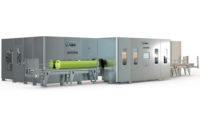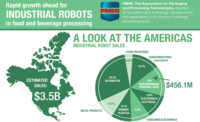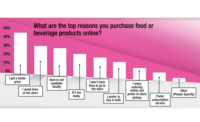Embracing Sustainability in Food and Beverage Processing
Tackling Ethical Consumption in a Growing World

As the Earth’s population is expected to grow by more than two billion people in the next 30 years according to a 2017 United Nations report, it will become more imperative to address the sustainability of food processing. Population growth translates to higher required food output and consumers — specifically millennials — have concerns surrounding the environmental impact of today’s food supply chain. This leads them to seek out brands that proactively address the matter.
Some companies embrace this movement, successfully achieving large-scale carbon-neutrality while remaining profitable. However, many food and beverage processors face hurdles in making such significant strides. These companies juggle competing priorities, which include strengthening food safety, adapting to an e-commerce marketplace and increasing operational flexibility to diversify their product lines. As the processors work to do it all, they can still drive both sustainability and productivity through exercising a focus on energy and resource efficiency.
Of course, this approach includes attention to several factors. From measuring the actual energy consumption of equipment to sourcing ingredients mindfully and locally, processors must make a few considerations:
1. Factor Energy Efficiency into ROI & TCO
Not too long ago, discussions about efficiency and sustainability were siloed, but that way of thinking has given way to an understanding that the two can be mutually beneficial. By minimizing the energy consumption of equipment, processors save on utilities in the long run. It’s a purchasing strategy that requires decision makers to see the bigger picture, and importantly, to factor these savings when determining Return On Investment (ROI) for a new purchase as well as Total Cost of Ownership (TCO).
In the OpX Leadership Network’s Total Cost of Ownership Packaging and Processing Machine Guidelines for CPGs and OEMs, utility and energy expenses factor into acquisition costs. The guidelines encourage end users to consider compressed air, electrical, gas, water and water treatment when calculating TCO. Neglecting to do so can paint an incomplete picture and prompt companies to spend more in the long run.
2. Implement Solutions that Boost Operational Efficiency
As equipment becomes more energy efficient, it is also becoming more agile, fostering operational efficiency. Food and beverage processors pursuing a greater diversity of products that require shorter runs, shorter changeover times and streamlined cleaning efforts, call for solutions that ultimately minimize energy usage and waste.
Clean-in-Place (CIP) options, modular components and user-friendly Human Machine Interface (HMI) technologies invite greater operational efficiency and contribute to reductions in utility usage and expenses. Inspection and detection equipment helps processors identify potential issues early on, minimizing fully costed waste—and the much larger and costlier expenditure and brand damage that can come with a recall.
3. Leverage Ethical Consumption
Increasingly, health-conscious consumers demand products sourced ethically and locally. The certainty around these ingredient origins reassures these consumers that the foods and beverages they purchase have a positive—or less negative—impact on the environment and humanity. If brands can point to supply chain energy and fuel savings owed to ingredients sourced from local farmers and the benefits to the local community, these companies can benefit from both the resulting cost savings as well as a boost in brand loyalty.
Some processors go above and beyond this measure, implementing track-and-trace solutions that allow consumers to see where their product ingredients come from and how they travel throughout the supply chain. They simply scan a barcode to learn about the farm that produced their milk, meat, produce, grain, etc. This kind of transparency bolsters consumer confidence in the brand’s efforts to produce environmentally friendly and ethically sourced products.
Find the Right Solution at ProFood Tech
Food and beverage processors seeking solutions to boost efficiency and sustainability can look to ProFood Tech (Mar. 26-28, 2019, McCormick Place, Chicago) as a resource. Produced by PACK EXPO, Koelnmesse (organizer of Anuga) and the International Dairy Food Association (IDFA), ProFood Tech is the only processing trade show in North America that addresses all market sectors, drawing 7,000 professionals from a range of food and beverage processing industries. Attendees can expect to see cutting-edge crossover technologies from 450 exhibitors over 150,000 net square feet of exhibit space.
Additionally, the Cold Pressure Council will hold its Annual Conference, March 26-27, in conjunction with ProFood Tech. Conference registration includes complimentary access to the ProFood Tech exhibits. The IDFA will also produce educational programming to address a variety of topics and product categories—all of which will be accessible to attendees.
To register and learn more, visit profoodtech.com.
Looking for a reprint of this article?
From high-res PDFs to custom plaques, order your copy today!







